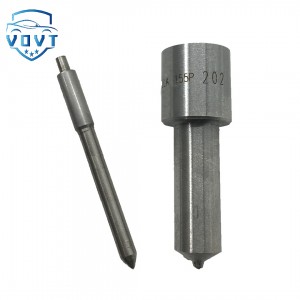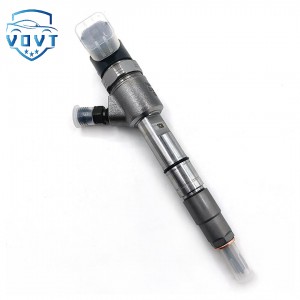The needle valve inside an injector nozzle is responsible for accurately controlling fuel injection timing and quantity. Due to its micron-level clearance and exposure to extreme environments, the needle is highly susceptible to sticking faults, especially under harsh operating conditions such as high temperature, high pressure, contaminated fuel, or poor lubrication. Needle-valve sticking disrupts normal fuel delivery, causes misfires, increases fuel consumption, and accelerates emissions deterioration. Therefore, a comprehensive multi-factor coupled analysis is essential to understand the mechanisms behind this failure mode.
The first major influencing factor is thermal–mechanical stress coupling. Under high combustion temperatures, the needle and nozzle body experience significant thermal expansion. When the thermal expansion mismatch occurs, the needle-to-seat clearance decreases, increasing frictional resistance. Simultaneously, repeated high-pressure cycles create mechanical deformation of the needle guide, further exacerbating the risk of sticking. In extreme cases, localized temperature spikes caused by poor heat dissipation may lead to material softening, increasing adhesion between the mating surfaces.
The second key factor is fuel contamination and deposit accumulation. Poor-quality diesel, high aromatic content, or long-term oxidation can generate insoluble particulates and varnish-like residues. These contaminants enter the micron-scale clearance between the needle and guide, forming abrasive particles or viscous films that hinder free movement. Additionally, incomplete combustion can cause soot backflow, depositing carbon at the needle tip and increasing sliding resistance. Over time, these deposits alter the needle’s motion trajectory and may lock it in either the open or closed position.
The third factor is lubrication degradation under high pressure and high temperature. Ultrahigh injection pressures above 180–250 MPa significantly reduce the effective lubricating film thickness between the needle and nozzle body. At elevated temperatures, fuel loses viscosity and shear strength, leading to boundary lubrication conditions. Under such circumstances, metal-to-metal contact becomes frequent, causing micro-scuffing, adhesive wear, and surface pitting. These surface defects increase friction coefficients and create conditions that can trap the needle during reciprocating motion.
A fourth coupled factor is cavitation erosion and flow-induced vibration. High-speed fuel flow through the needle seat generates intense cavitation bubbles, which collapse rapidly and produce micro-jets that erode the surface. This erosion roughens the guide area and promotes deposit adhesion. Moreover, high-frequency vibration induced by pressure fluctuations can disturb the needle’s dynamic response, causing misalignment and intermittent sticking.
The interaction among these factors forms a complex multi-physics coupling involving thermal, mechanical, chemical, and fluid-dynamic effects. Experimental evidence and numerical simulations indicate that needle sticking typically results from the combined influence of at least two or more factors rather than a single cause. Mitigation strategies include improving material coatings such as DLC or ceramic layers, enhancing fuel filtration, optimizing nozzle cooling design, and implementing adaptive control algorithms to compensate for abnormal needle motion.
Overall, understanding the coupled mechanisms behind needle-valve sticking provides critical guidance for injector design improvement, reliability enhancement, and maintenance strategies in harsh environments.



















